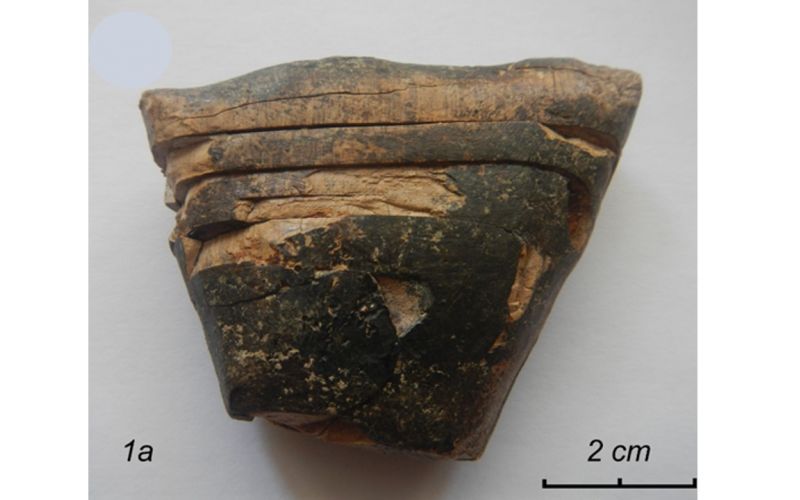Zoomorphic figurine
The item has a flattened trapezoidal shape. A round head is clerly seen. Pointy (side view) but not found tail of the figurine corresponds to seal's hind flippers. The trapezoidal bottom of the figure gets its explanation. The master depicted an animal standing in a tense pose, stretching out its head, and leaning on its flippers. The figurine which in the first edition was called “a bird sitting on a nest” [Vasilievsky, Drozdov, 1983] seems to be more consistent with the image of the seal (Akimova, Metlyaev, 2005; Schmidt, 2011].
Manufacturing technique
When microscopic analysis of the item, traces of tools that were used for its shaping were found. Almost the entire surface of the item has some traces of intensive grinding which cover some traces of a push-plane work. Some traces of a burin work were found in the head zone.
Use-wear traces
On the lateral planes there are numerous traces of hits with a sharp object that were applied to the complete item.
Storage location
The museum of IAAE SB RASInventory number
№239/12Size
Length of upper line - 53 mm
Length of bottom line - 41 mm
Width - 51 mm
Thickness - 19 mm
Material
IvoryDating
19-23 th years BPCulture
Upper PaleolithicThe author of the excavations
Drozdov N. I.1981
Publications
Akimova E. V., Metlyaev S. V. Interpretaciya skul'pturnogo izobrazheniya s paleoliticheskoj stoyanki Ust'-Kova// Drevnosti Prienisejskogo kraya – Vyp. 2. – Krasnoyarsk. – 2003. – S. 18–19
Vasil'evskij R. S., Burilov V. V., Drozdov N. I. Arheologicheskie pamyatniki Severnogo Priangar'ya. – Novosibirsk, Nauka, 1988. – 244 s.
Vasil'evskij R. S., Drozdov N. I. Paleoliticheskie skul'pturnye izobrazheniya iz Vostochnoj Sibiri // Plastika i risunki drevnih kul'tur – Novosibirsk, Nauka, 1983. – S. 59–65

